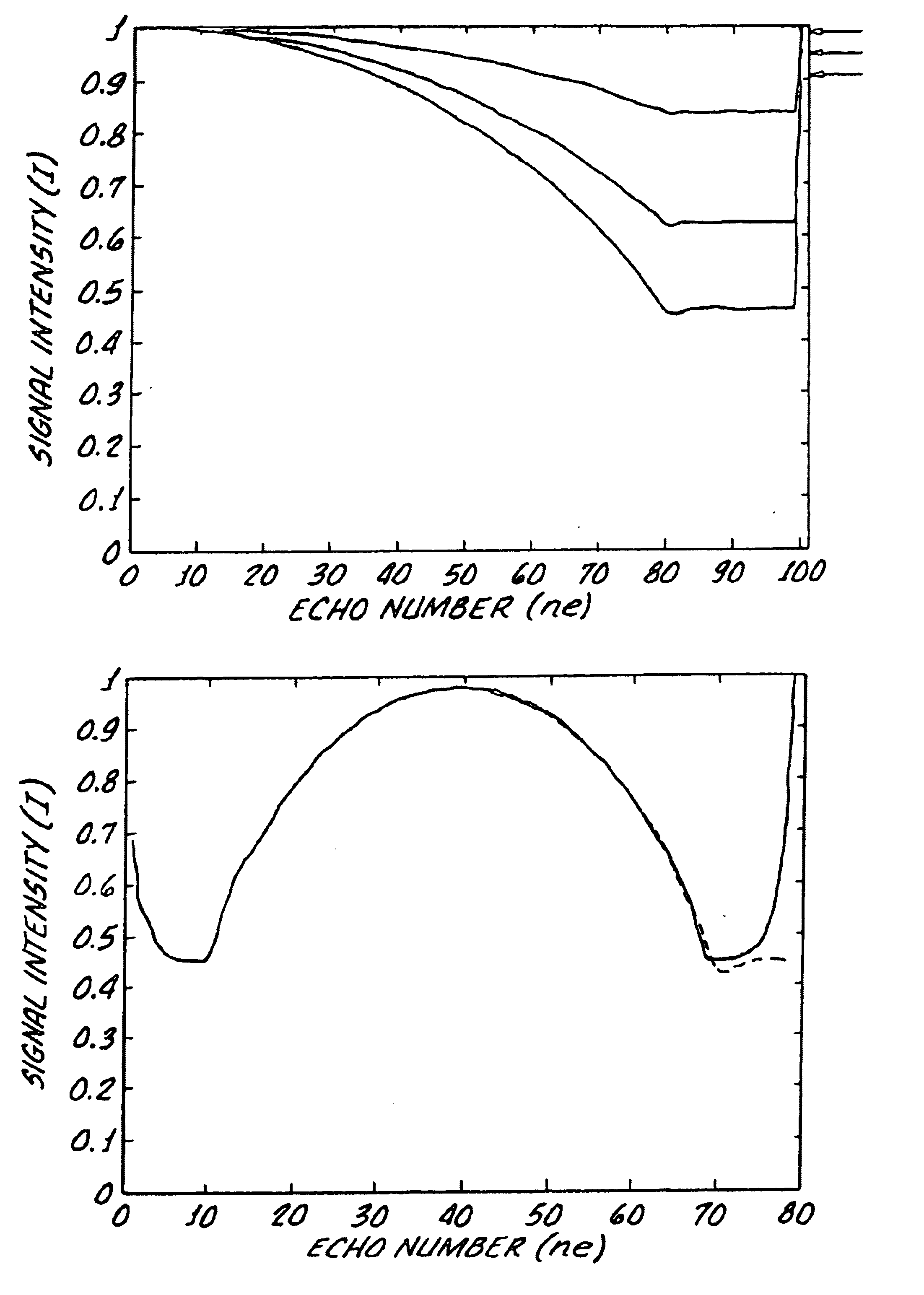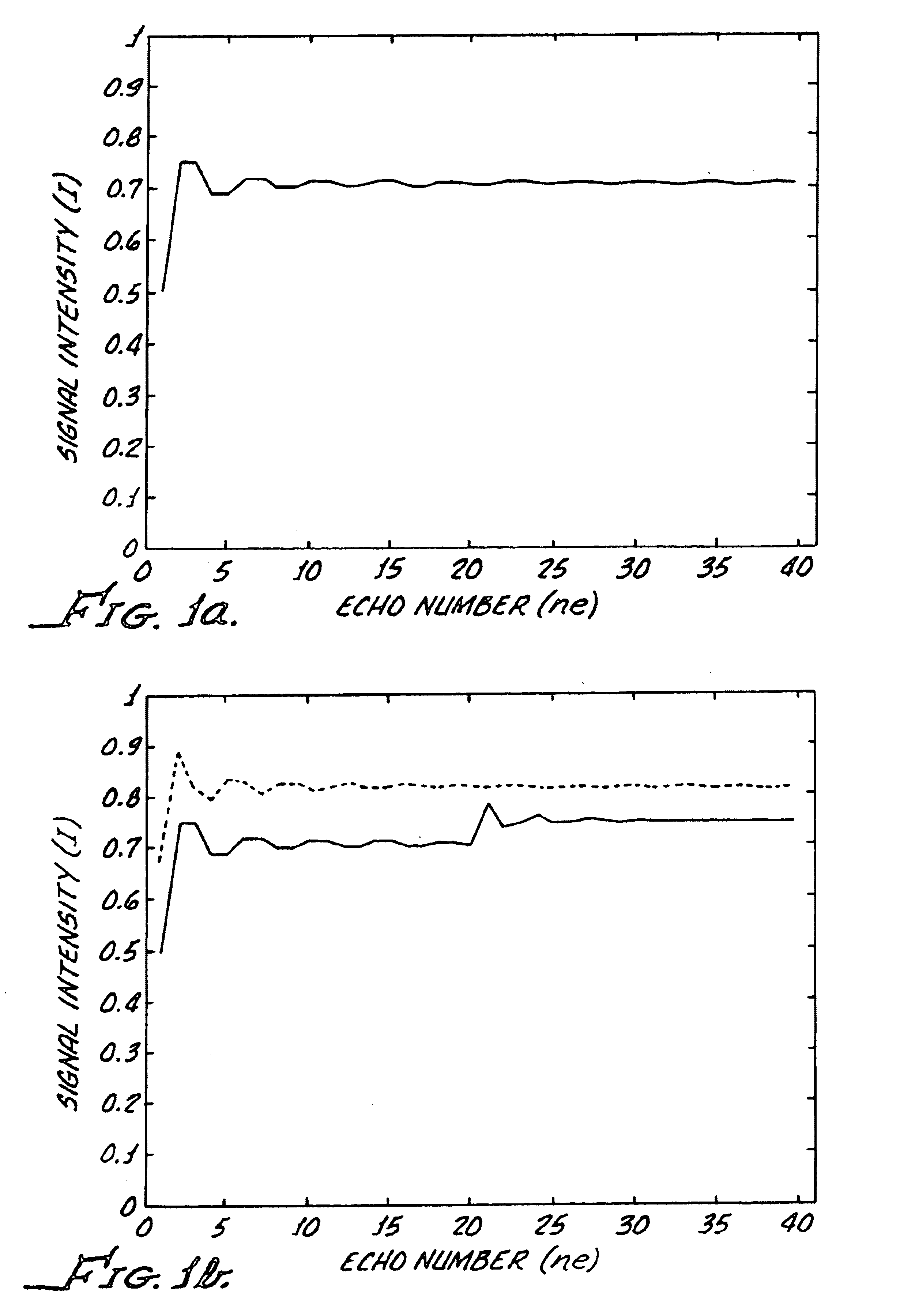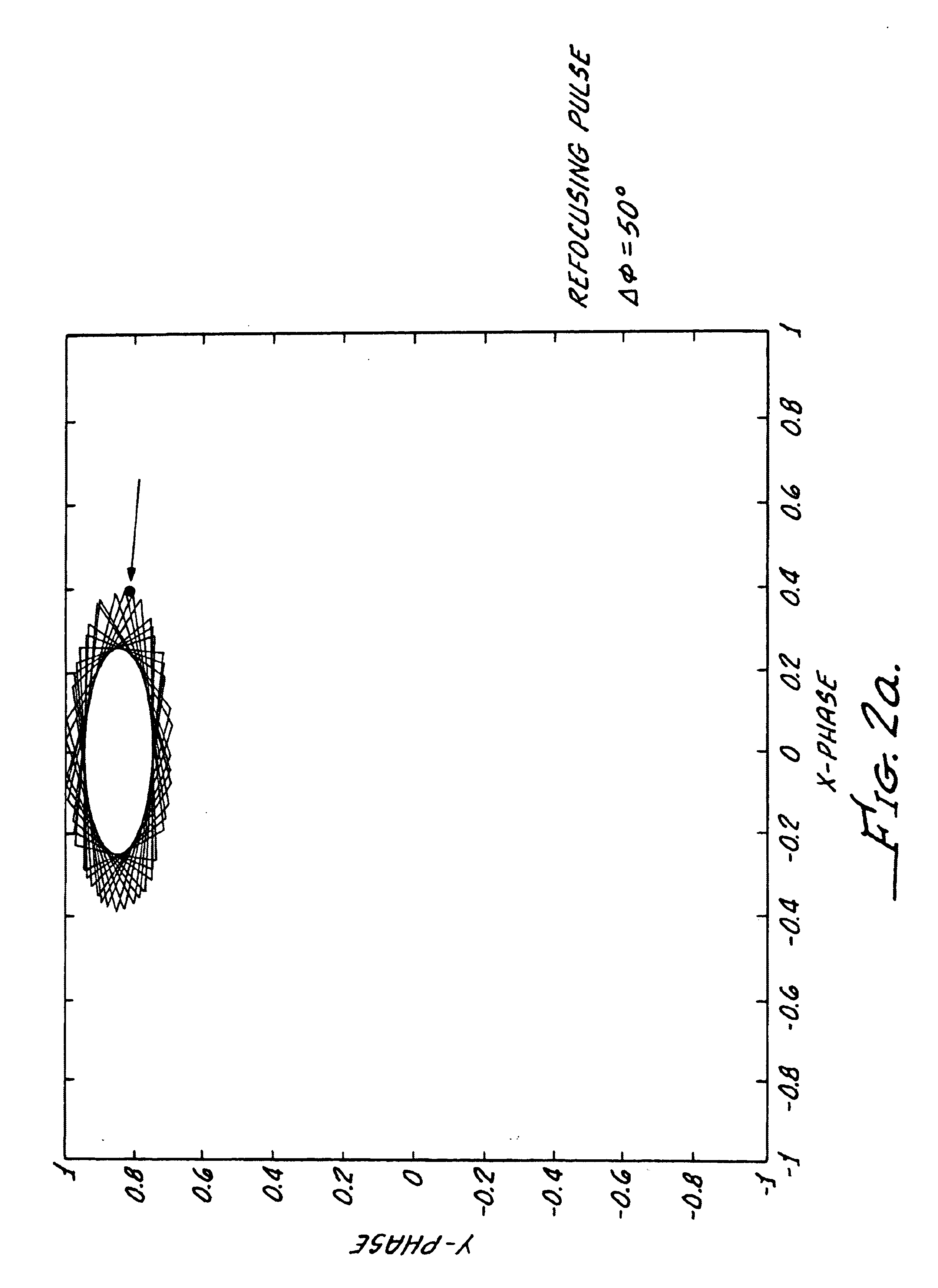Method for measuring the magnetic resonance (NMR) by means of spin echoes
a technology of spin echoes and magnetic resonances, applied in the field of nuclear magnetic resonance (nmr) spectroscopy or tomography, can solve problems such as signal loss, and achieve the effect of reducing the overall rf energy over the echo train
- Summary
- Abstract
- Description
- Claims
- Application Information
AI Technical Summary
Benefits of technology
Problems solved by technology
Method used
Image
Examples
Embodiment Construction
ntensities I along the echo number ne for a multi echo experiment wherein initially the refocusing flip angle is linearly reduced from 180° to 30° (1), 50° (2) and 90° (3) over the first 80 echoes, the final 90°+α / 2 pulse produces a signal of an intensity of 90% (1), 95% (2) and 99% (3);
[0042]FIG. 12 shows signal intensities I along the echo number ne for a multi echo experiment wherein initially refocusing flip angles corresponding to those of FIG. 6b are used over the first 40 echoes, the second half of the echo train is carried out according to the principle of hyperecho formation;
[0043]FIGS. 13-14 compare flip angle (α) and signal intensity as a function of echo number (ne) for a prior art hyperecho experiment and an experiment in accordance with the present invention; and
[0044]FIGS. 15-16 compare the flip angle and signal intensity of a hyperecho sequence (dashed line) with a linear change in flip angle (dotted line) after the same initial sequence.
DESCRIPTION OF THE PREFERRED ...
PUM
 Login to View More
Login to View More Abstract
Description
Claims
Application Information
 Login to View More
Login to View More - R&D
- Intellectual Property
- Life Sciences
- Materials
- Tech Scout
- Unparalleled Data Quality
- Higher Quality Content
- 60% Fewer Hallucinations
Browse by: Latest US Patents, China's latest patents, Technical Efficacy Thesaurus, Application Domain, Technology Topic, Popular Technical Reports.
© 2025 PatSnap. All rights reserved.Legal|Privacy policy|Modern Slavery Act Transparency Statement|Sitemap|About US| Contact US: help@patsnap.com



